SRAM was out in full force at this year’s Garda Bike Festival with an amazing array of bouncy and stoppy-go-y-ness.
For once SRAM wasn’t launching any new products or upgrades but the amount of new MY19 (model year 2019) kit on there showed just how much had already been released this year. Side-stepping the “how can it be a 2019 model at the start of 2018″, here’s a quick round up of all the new shiny stuff – forks, shocks, lock outs, brakes and not-a-new-standard new crank and BBs – in case you missed it first time round.
RockShox forks and shocks – updated models, new DebonAir spring and new compression damping
First up, front end bounce. We’ve already reported on the new Lyrik RC2 and updates to the DebonAir spring and compression dampers across all models so I’ll just briefly recap on changes to the spring and damper.

At the tender age of one the DebonAir spring has received a major update. Firstly, to improve small bump sensitivity and mid-range support there’s been a big increase in the negative air volume – 42% on the Lyrik and Yari and 36% on the Pike and Revelation. Secondly, by separating out the different systems on the forks, RockShox identified the potential to reduce friction within the air spring. By replacing the plastic seal with a bushing they’ve made a much smoother spring, particularly when the fork is subject to side load and rotation. Whilst I didn’t get to ride the two systems, just feeling the movement of the spring on RockShox’s model I was amazed at what a difference there was. If this translates directly onto the trail, we’re in for a smooth ride.

On the compression damping side of things RockShox have added more adjustability for those who want it whilst trying not to bamboozle those who don’t. Bigger travel forks will now feature the Charger 2 RC2 damper, which simply offers up a different type of adjustment to the current RCT3 damper. The low-speed damping adjustment stays the same but replacing the three position open/pedal/firm adjustment is a dial with five levels of adjustment with the middle setting the same damping as you get with the RCT3 in the ‘open’ position.
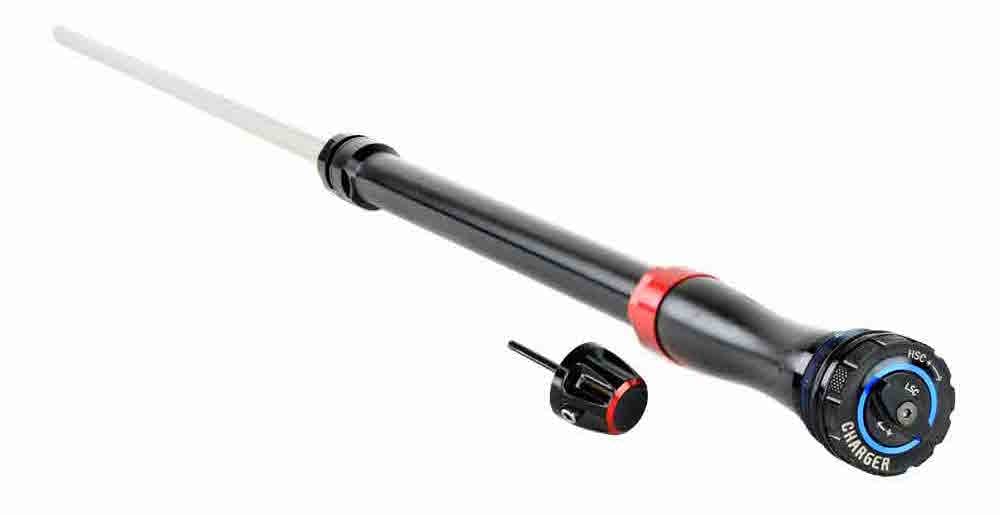
There have been similar updates for rear shocks on the Deluxe and Super Deluxe models. The DebonAir spring has been updated in line with changes to the fork spring, and there have been structural developments in the manufacturing process to improve the physical roundness of the air. The transfer ports are also now machined rather than knocked in place. These changes work together to improve the smoothness of performance throughout the stroke, which according to RockShox, eliminates that slight ‘hammock’ feeling you can sometimes get when initially sitting on the bike and pushing through the sag point.
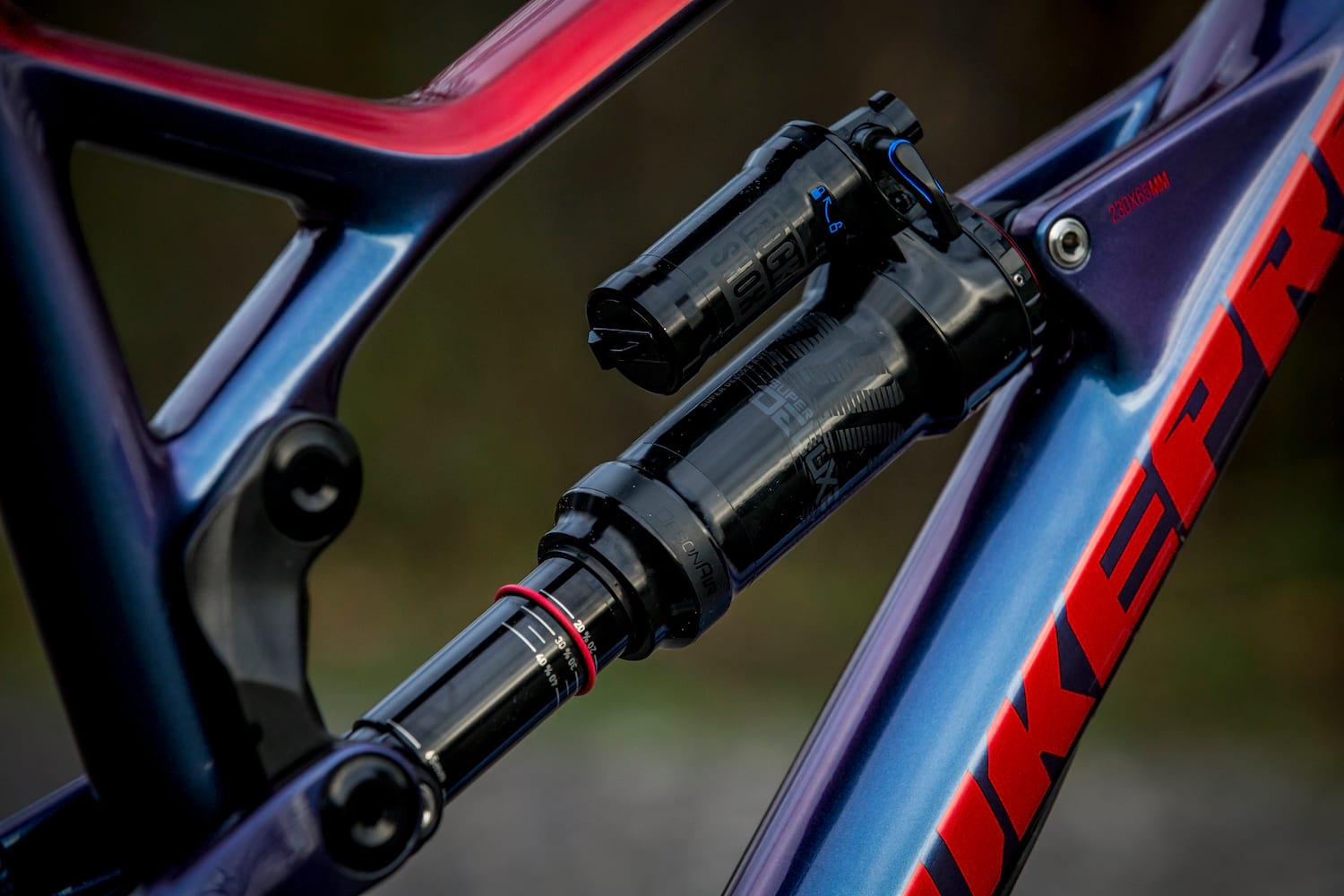
Long and not so short forks
Suspension developments that you may be less aware of are the new Boxxer and 120mm SID forks.
The Boxxer was first shown at the DH World Cup in Croatia at the end of April. Previously only a 27.5in fork it’s been redesigned to keep up with the 29er DH pace setters. RockShox could have easily stuck a 29er lower leg to the existing fork that would have increased its overall length and resulted in a higher front end. So instead they redesigned the whole fork chassis incorporating a flat crown to compensate for the longer lowers. Naturally the new Boxxer 29er features the new DebonAir spring and RC2 damper on its inside and a bright red paint job on the outside.
With XC courses becoming more technical and gnar, riders at the other end of the World Cup racing scene have also pushed RockShox developments this year. Adding more travel to the existing SID was a natural step for RockShox to meet the demand for a fork with the same low weight and responsiveness of the existing short travel models but more travel and stiffness to cope with bigger terrain. The 120mm SID RLC and RL are available alongside the traditional 100mm travel versions and all the forks get the new spring and damper systems. Fuller details and specs are over here. I for one am very excited about the prospect of riding one of these.
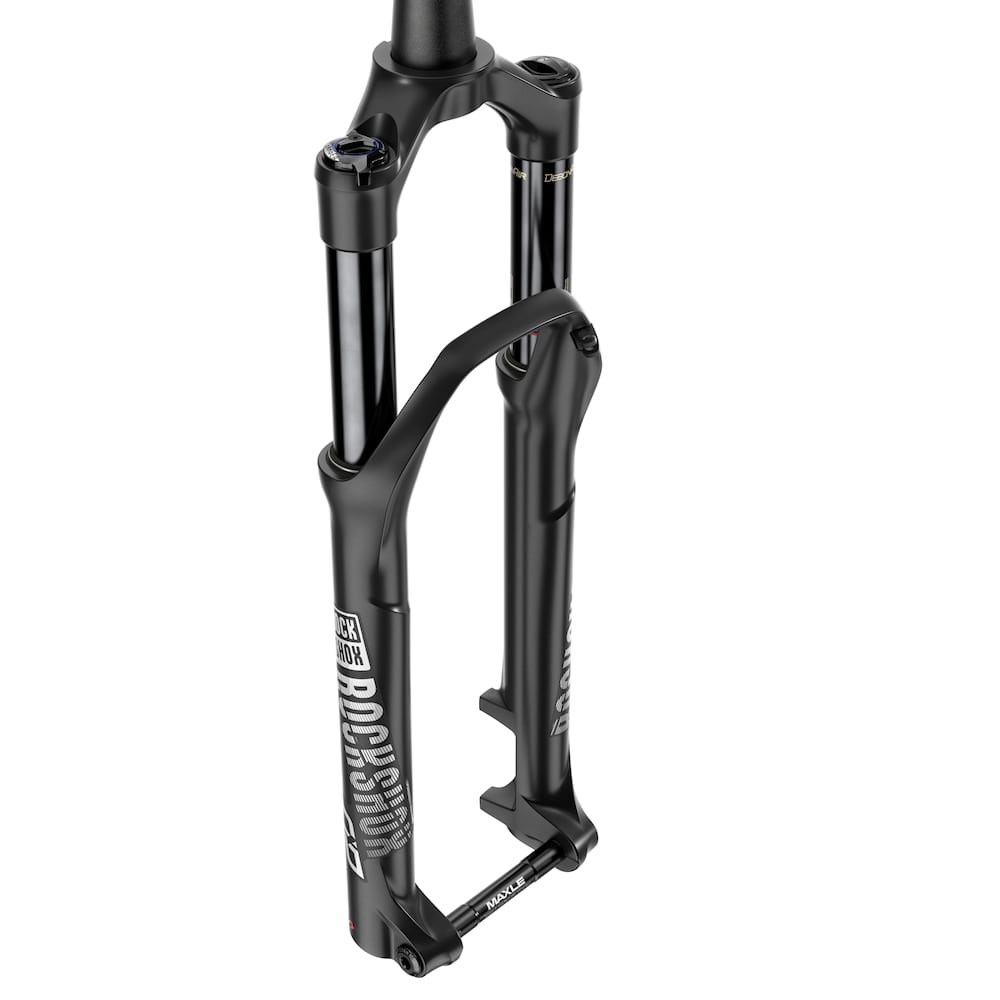
Tune in, lock out
As we’ve already reported RockShox has also updated its remote suspension lock out. The TwistLoc is a left-hand only cable actuated system akin to a skinny grip shift which you can run as a single or dual lock out system depending on your fork and shock. It’s been designed to be as light-touch and ergonomic as possible so you can lock-out repeatedly and quickly even in full-gas XC racing mode. As well as featuring on new bikes it’s available after market for £107 if you have the cash to upgrade your current system. Unfortunately for people like me who have the fickle hydraulic lock out system, you can’t swap over from hydraulic to cable though. On that matter, RockShox told me they are no longer producing a hydraulic system as it was “so problematic”.
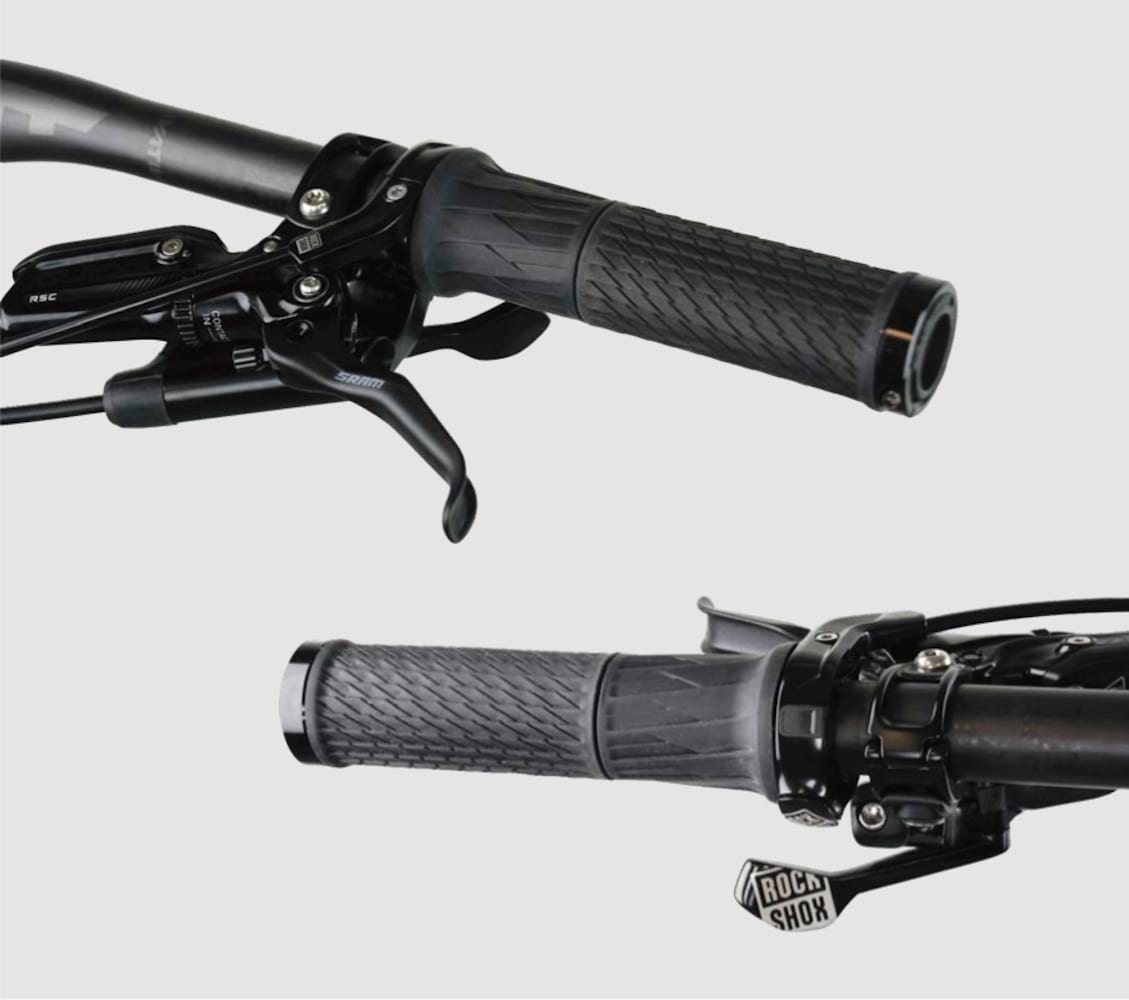
What pressure for…?
Finally in the RockShox world is the new Trailhead smartphone app and web-based suspension tuning support. All you need to do is put in the serial number of your fork and your weight and it will give you a starting point for air pressure and rebound settings. It’s not, as you might think, something clever and whizzy which incorporates on-trail info via a Shockwiz. Rather, in the most basic sense, it’s a glorified version of the information sticker on the back of the fork leg but with rebound settings too. More positively it links to all the guides and technical documents that relate to your fork, adjusts settings for eBikes and can identify your fork model from its serial number even when you no longer have a clue what it is. At the moment it just contains MY18 and MY19 fork information but is quickly being populated for older forks and shocks too.
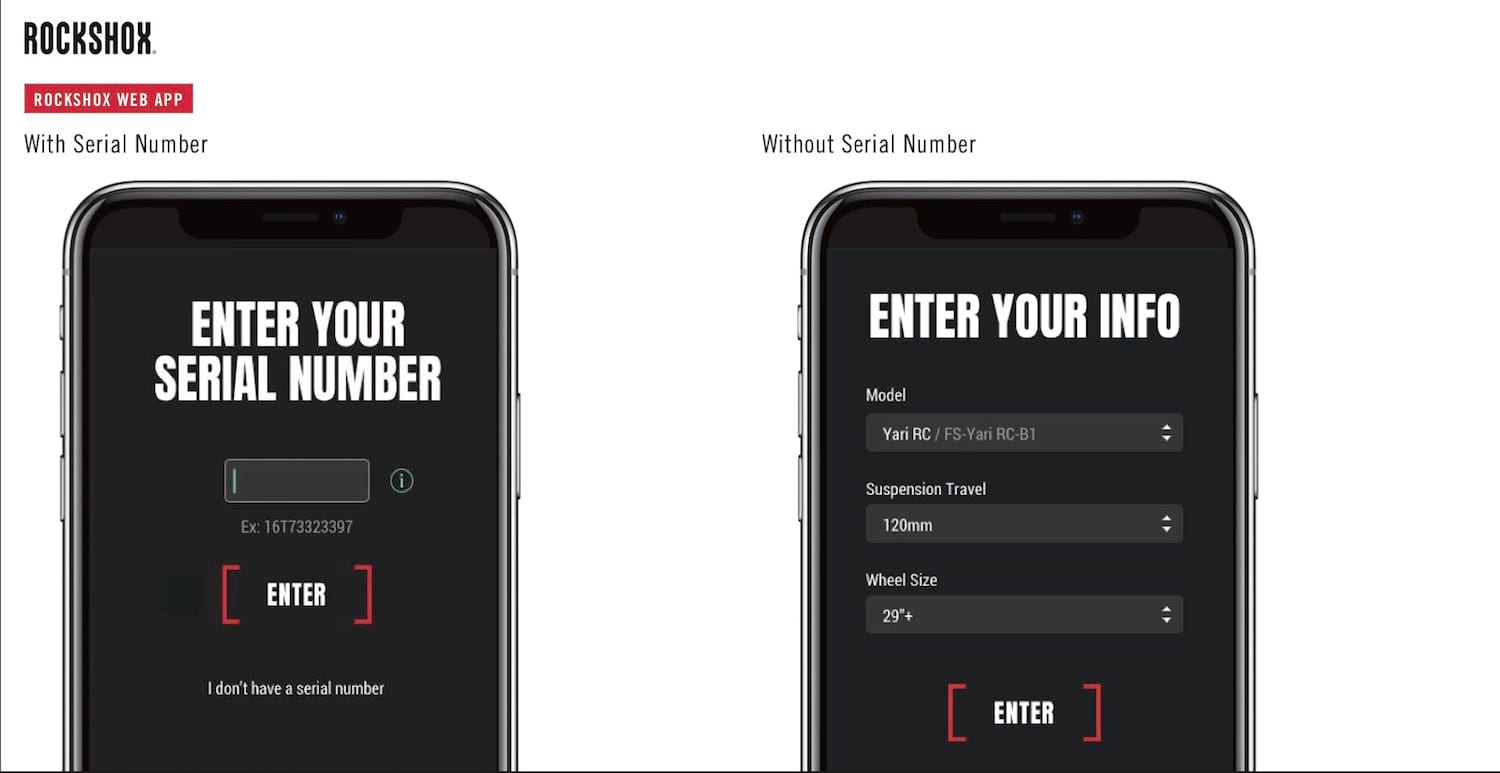
Stopping
Away from suspension, developments have been more modest.
Firstly there’s the Guide T brake, the entry level Guide which retails for £104 per end. As other Guides it is a four-pot system and utilises the matchmaker clamp but is weightier and doesn’t have any reach adjustment compared to other brakes in the range. If you want to know more, we’ve already covered more of the details over here.
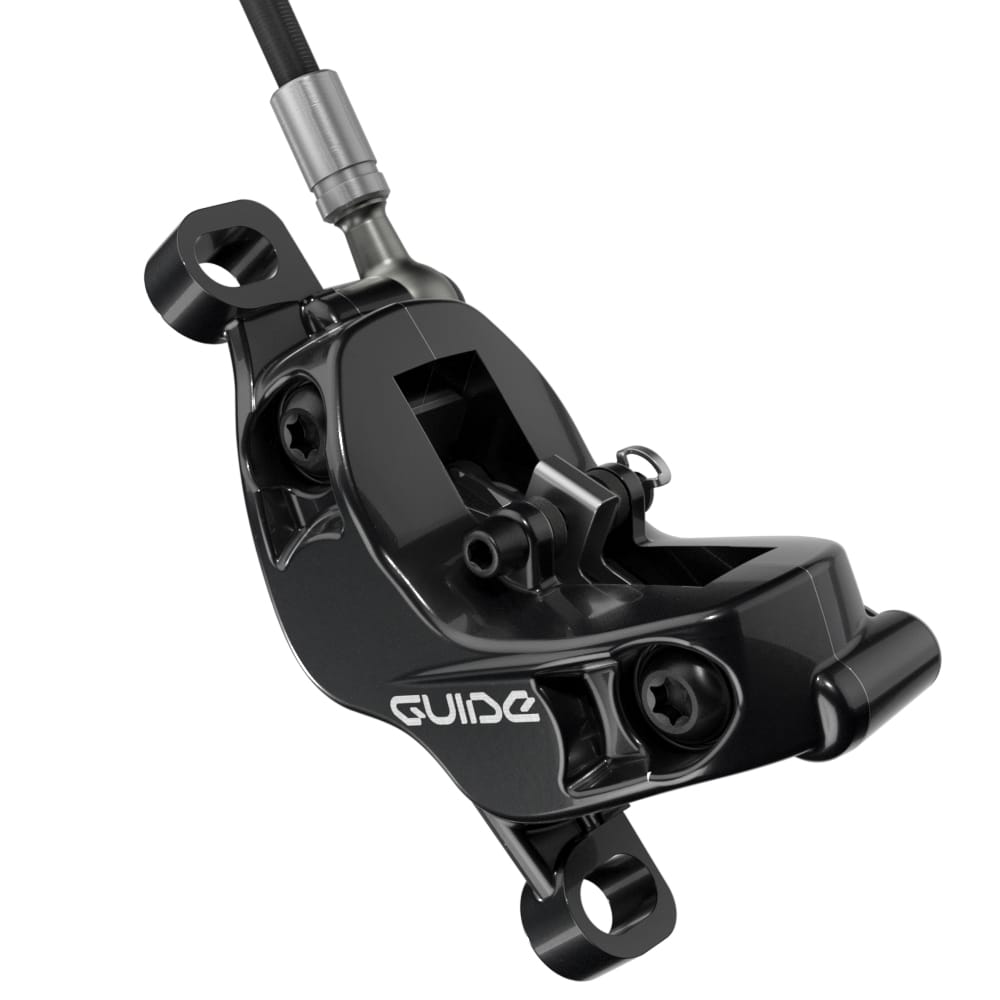
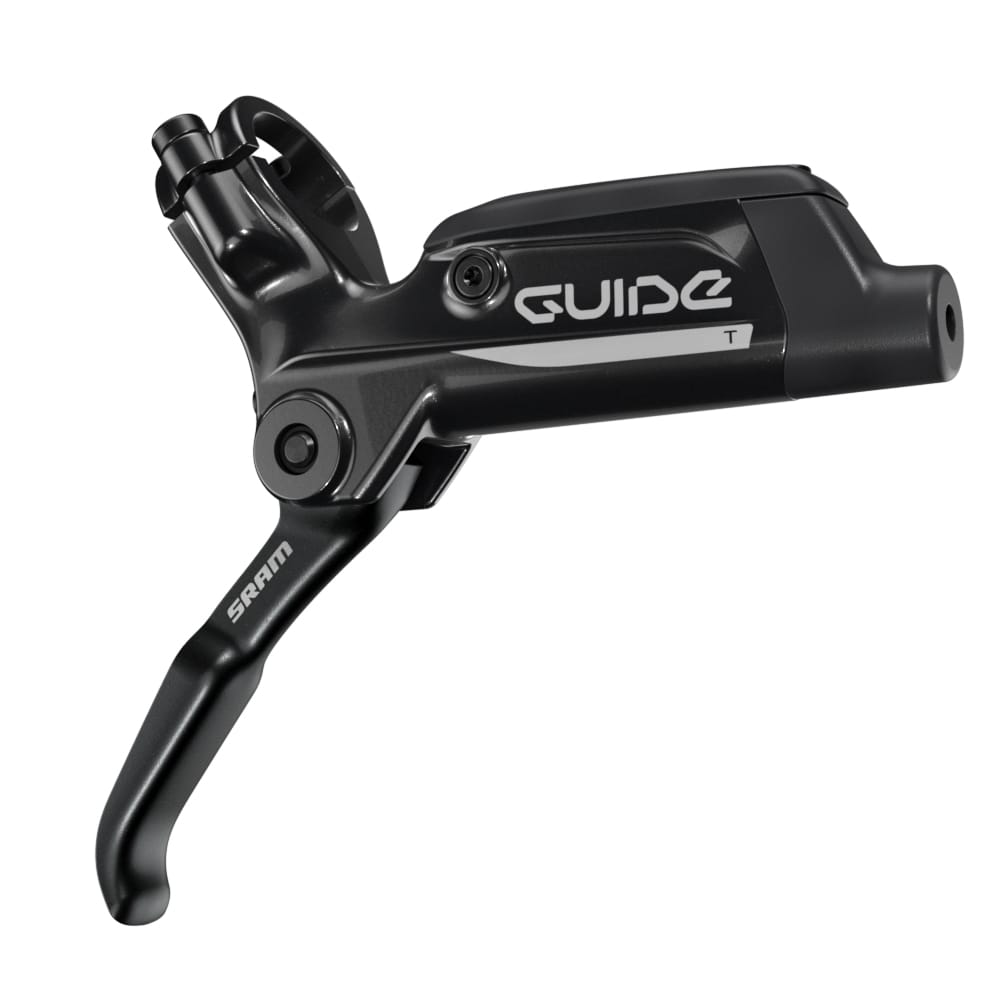
DUB Cranks
Last but not least is the new DUB BB and crank system. Which isn’t a standard, well, at least not a BB one. Wil has gone into more detail here so I’ll keep things relatively brief.

Essentially SRAM has produced a new crank that will replace the current GXP and BB30 versions, while being compatible with all major BB standards – threaded (68/73mm), press-fit (BB92), BB30, and PF30. To do this SRAM has reduced the axle diameter from 30mm to a shade under 29mm and has engineered a DUB BB for each shell. By doing so they believe they’ve engineered out the problems with sealing and durability that you have when you try and mix and match systems at present either with reducer cups to get a 24mm crank into a BB30 or using skinny bearings to get a 30mm crank into a BB92 shell.
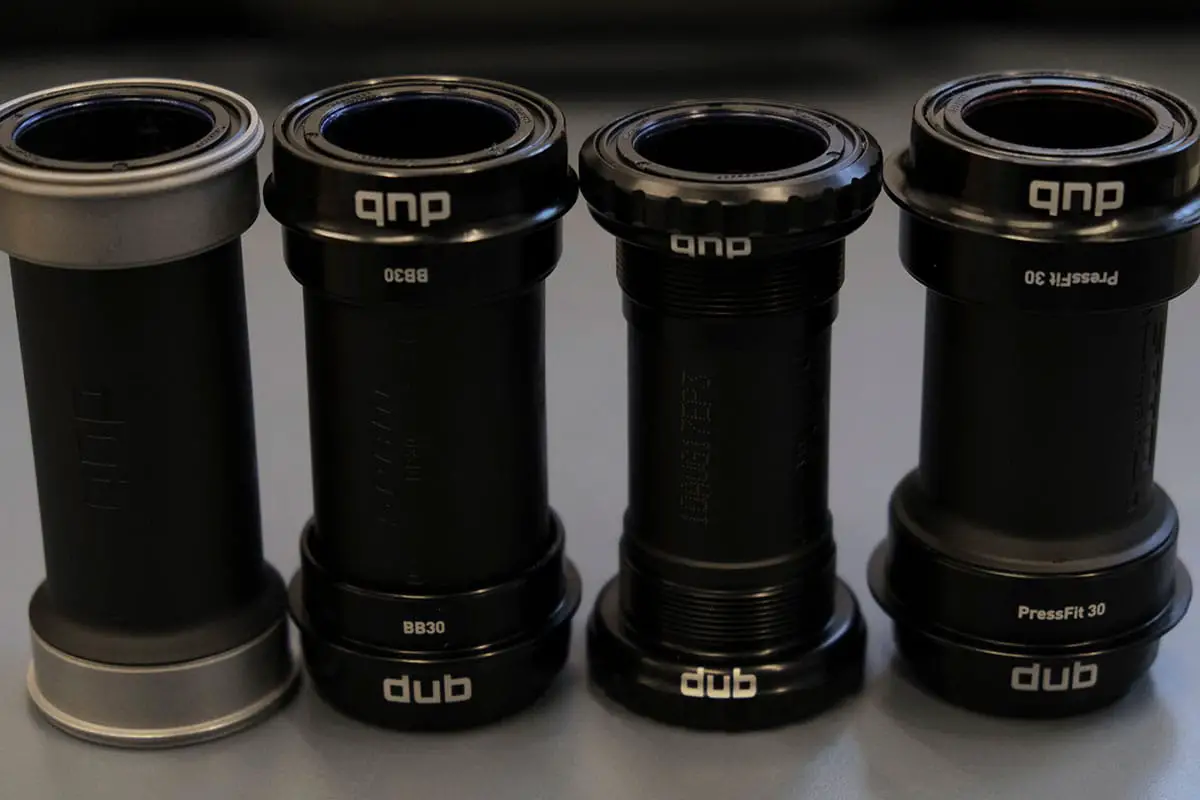
Otherwise the DUB crank is pretty similar to the current BB30 so unless you’ve got micrometres for eyes you’re unlikely to notice the difference. Or unless you weigh it, the DUB is the lightest ISO standard crankset on the market at a claimed 420g including a 32t ring. Just make sure you buy the right BB when the time comes.
For more details of all the products, see our various reports linked above or head over to SRAM’s website.
Disclosure
Rachel’s travel and accommodation were paid for by Abus.





great read!
Nathan